#aswang
Explore tagged Tumblr posts
Text

tw // blood, body horror
“Honora…“
“Not now, Benito! We've just uncovered—-“
“No…look!”
🥀🐦⬛🧛🍂
Tropical gothic my beloved i am SO back 🩸 decided to make a fake book cover about filipino monster hunters solving mysteries together
#artists on tumblr#digital art#digital illustration#digital painting#oc#original characters#vampires#vampire hunter#filipino folklore#manananggal#aswang#filipino myths#character illustration#character art#tropical gothic#philippines#filipino aesthetic#vampire aesthetic#southeast asia#SEAsian art#monster art#supernatural#fantasy#historical fantasy#dark fantasy#aesthetic#nik's art
445 notes
·
View notes
Text
💜🗣️40%! We're at 40%!!!💜🗣️

The digital copy is only $10 CAD or $7+ USD so it's very accessible to anyone who wants to get a copy but can't afford shipping.
It's an 80+ page queer monster loving comic anthology with a diverse set of stories and spice levels! 🇵🇭🏳️⚧️🏳️🌈🔞💜
Print copy is $25 CAD / $18+ USD + shipping
We've also got the previous comics in the set as add-ons!
💜GRAB YOURSELVES SOME COPIES💜
(of both the old and new monster lover anthologies by Filipino artists!)

#filipino comics#komiks#monster lover#monster fucker#monster romance#filipino folklore#filipino monsters#manananggal#tikbalang#aswang
259 notes
·
View notes
Text
Corazon Marikit~ Monster High releases a Manananggal Doll!~




She's a 2025 Skullector release
For context, there was a film released before called "Corazon, Ang Unang Aswang" Corazon, the first Aswang. Manananggals (Coming from the root word "Tanggal" meaning remove) are a subtype of Aswang.
Marikit, on the other hand, means pretty; usually referring to flowers or women.
52 notes
·
View notes
Text

Manananggal Eliza.
99 notes
·
View notes
Text

vampires of all sorts <3
#vampires#ocs#nosferatu#cardinal smcu#carmilla#dracula#hopping vampire#aswang#manananggal#stickers#i sell these at cons :D
43 notes
·
View notes
Text




take a gander at my beloved oc’s
#original character#oc#aswang#manananggal#furry#furry anthro#furry art#furry stuff#dnd character#filipino mythology#ali draws
42 notes
·
View notes
Text
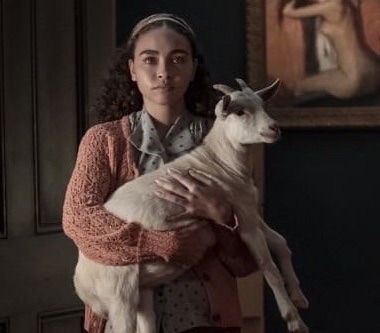


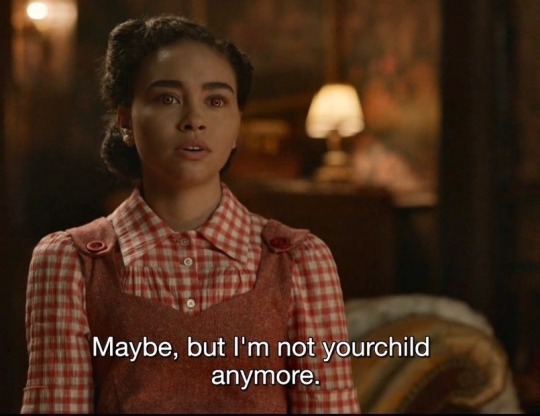


I am the bad daughter, the freedom fighter, the shaper of death masks. I am the snake, I am the crone; I am caretaker of ancient trees.
I am the opposite of your blessed womb; I am your inverted mirror.
Guard your unborn children, burn me with your seed and salt, upend me, bend my body, cleave me beyond function. Blame me.
— aswang, barbara jane reyes ; claudia in amc iwtv
152 notes
·
View notes
Text
Kontra: Against Evil
Support Our Kickstarter!
Terror lives! I'm pleased as hell to announce that Kontra: Against Evil, the new manga that I'm working on as an editor, is already 85 percent funded on @kickstarter! From its conception by friend and author N.P. Alfaro, I knew that Kontra would be something special. And looks like I was correct and audiences are loving it! Not only is it a folk horror story with stunning art and writing, but its setting of the Philippines during the early 1900s (along with the creatures from Pinoy folklore) are uniquely adapted by this creative team.I believe there is a massive need for stories about and by different cultures across the world, and it is an honor to be involved in this project. If you believe in this mission of diversity in storytelling as well, there is a link to Kontra's crowdfunding campaign here!And of course, shares are always welcome!
#horror#manga#manga art#anime and manga#aswang#vampire#vampires#philippines#character art#creature design#mythical creatures#folklore#pinoy#filipino writer
98 notes
·
View notes
Text

Cryptid of the Day: Aswang
Description: A shape-shifting monster of Filipino mythology, it has the powers of a werewolf, vampire, and witch. While the myth might have started from Spanish colonists trying to control local populations, many believe that Aswang is real and blame the monster for various unexplainable events. It can transform into a hog, a cat, and a hound.
33 notes
·
View notes
Text
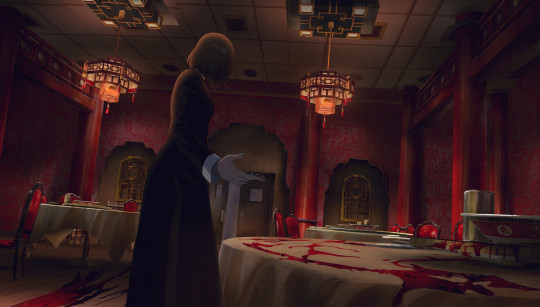

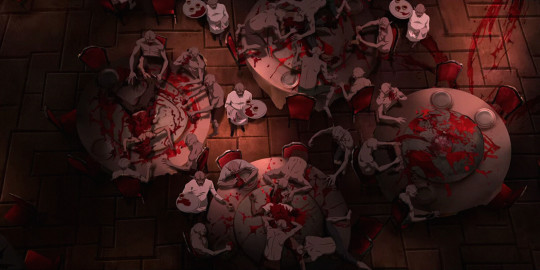
The aswang restaurant
Illustrated by Eddie Mendoza. Trese (2021)
58 notes
·
View notes
Text


fake concept art and reference sheets lol
#oc#original character#concept art#character concept#aswang#vampire#philippines#reference sheet#oc art#digital art
14 notes
·
View notes
Text
Monstrous Youths- Mme Bustier Change & Plans
@artzychic27 @imsparky2002
Hello, all! Just a brief announcement, I’m adding some stuff to the Monstrous Youths lineup. I still plan on starting the MiracOlympus posts, but I’m also doing profiles for the four main teachers. Just as a reminder, here are their species:
Mme. Mendeliev: Headless Horsewoman (Her horse’s name is Isaac and he usually hangs out in her classroom. He’s basically the class pet. Just be careful, because his hooves are solid iron and he breathes fire.)
Mme. Bustier: Empousa. (I decided to change her from a zombie to differentiate her from Sabrina. These are basically the succubi of Greek Myth, but Caline kinda bucks her kind’s ways and chose to become a teacher. You always hear her coming because of her copper leg.)
Mme. Winters: Aswang. (She’s native to the Philippines and her last name comes from her wife. She has bat wings and her feet face backwards, which makes buying shoes a bit difficult.)
M. Grotke: Tekhumiavi. (Native to India, these are also known were-tigers. But what’s unique about them is that instead of turning into tigers, their spirits leave their bodies and possess tigers. Alonzo doesn’t believe in doing this without consent like most of his kind, and shares a deep spiritual bond of friendship, trust and respect with tigers.
Keep an eye out for these guys!
#miraculous ladybug#school for monstrous youths#caline bustier#empousa#olga mendeleiev#headless horsewoman#dahlia winters#aswang#Alonzo Grotke#tekhumiavi
9 notes
·
View notes
Text







11 notes
·
View notes
Text
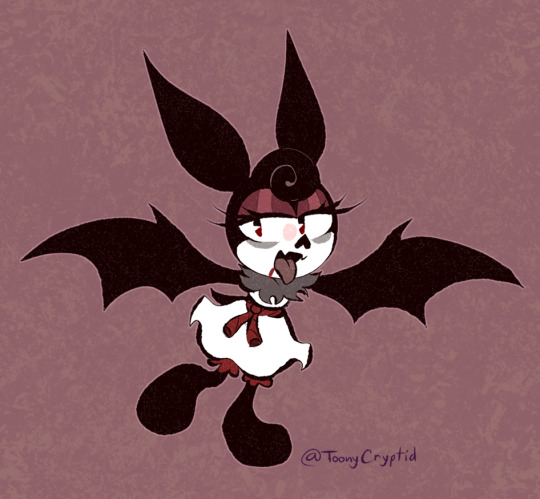
Eliza dressing up as a manananggal.
79 notes
·
View notes
Note
Can you tell us more about Filipino mythology and moneters, cause there's no 1 official website and I almost always barely passed filipino? Can you also list like great sources for me to read? Thanks
I had a pretty busy week last week so it took a while to get to this ask but I'd love to give more info on the topic!
More on Filipino Mythology:
Si Apolaki at Mayari - Bakit may araw at gabi
EN: Apolaki and Mayari - Why there's day and night
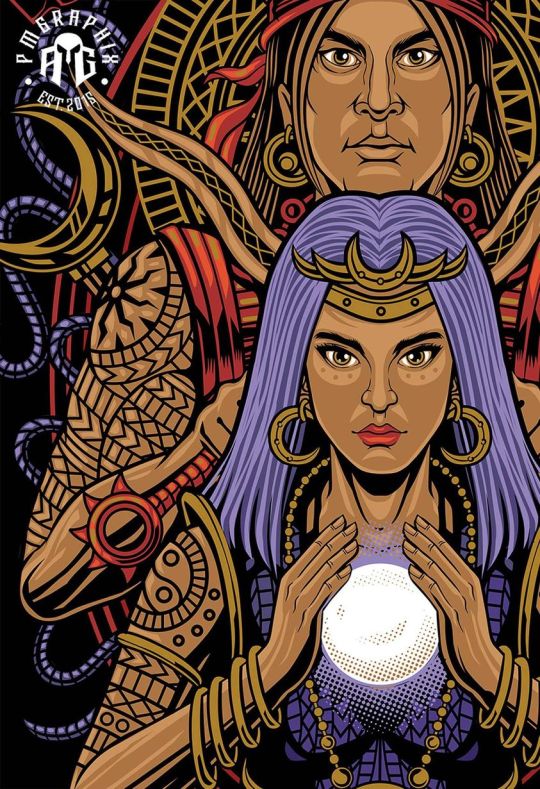
An illustration of Apolaki and Mayari created by the illustrator PM Graphix
I am currently still doing a write-up on the Tagalog pantheon so I could start by maybe talking about that and what I've found. For the mythology section of this, let me start with something that's actually not from the Tagalog pantheon but is often attributed to the Tagalog pantheon: the Kapampangan story of Apolaki and Mayari or why the day and night exist. This story has been sourced from Maximo D. Ramos's book Philippine Myths, Legends, and Folktales (which you can buy on Amazon here, sadly I cannot find a free version of the book without going through suspicious links) and posted by Jordan Clark of The Aswang Project on his website.
BATHALA, the creator of the world, had a son named Apolaki and a daughter named Mayari. The light that shone upon the world and enabled the people, the beasts, the birds, and the fish to see came from the bright eyes of Apolaki and Mayari, So all the creatures loved them dearly. Bathala himself was very fond of his children, and he watched over them as they wandered across the meadows of heaven. Since the eyes of Apolaki and Mayari shone continuously, it was always day on the earth. In time Bathala grew feeble with age and died. Then Apolaki and Mayari had a quarrel, for each wanted to rule the world alone. “I am the man and I will succeed my father to the throne,” said Apolaki. “I am going to rule the world, whether you like it or not.” Mayari’s eyes flashed with anger and she said, “I am no less my father’s child than you. I will succeed him to his throne, whether you like it or not!” The quarrel grew from bad to worse, and finally words could not express their furious rage. So they picked up wooden clubs and fell upon each other with fierce blows. Back and forth they fought until at last Apolaki struck Mayari in the face and she became blind in one eye. When he saw his sister stricken, Apolaki took pity on her and said, “Let us fight no more, my sister. Let us share our father’s kingdom equally between us. Let us reign by turns and be friends.” Mayari agreed, and from then on, Apolaki, whom we know today as the Sun, has ruled the world half the time. Mayari, whom we now know as the Moon, has taken turns with her brother in ruling the world. When Apolaki is on the throne, the world is flooded with warm light, because the light beams from his two bright eyes. On the other hand, when Mayari is reigning, the world is bathed with cool and gentle light; for she is blind in one eye.
Now from what I've researched, a lot of places tend to attribute the story to the Tagalog people or state that it is a shared story from both the Tagalogs and their neighboring Kapampangan up north from them but I cannot find any specific source prior to the late 1960s that even mention that Mayari was part of the Tagalog pantheon so it may be a more recent addition.
The source that first states Mayari's inclusion as a part of the Tagalog Bathala's court comes from a paper written by F. Landa Jocano called Notes on Philippine Divinities (1968) where he does not cite a specific source of where he has learned Mayari was of Tagalog origin nor even stated that he had learned it from a Tagalog local and considering Jocano himself isn't a Tagalog nor is he Kapampangan, it's unlikely he's learned it from his upbringing or otherwise.
I had also done a little digging on his sources and none of them bring up Mayari nor her sister Hanan, the goddess of dawn, so the paper leaves much room for doubt. Tala, the goddess of stars, who is also listed in Jocano's paper make a lot more sense despite the lack of sources as it is the actual word for star in Tagalog but I still have to do further research on her as well.
Either way, I had also never heard of Mayari as a Tagalog deity outside Jocano's work and online articles that heavily source Jocano (The Aswang Project, one of the most popular sources for Filipino mythology which I had used as a specific source for Kapampangang mythology, has cited him twice in regards to Tagalog mythology specifically but not Kapampangan mythology). This is also despite me being born and raised within a mostly Tagalog community.
All of that for me to say that this story of Apolaki and Mayari may be a later addition to the Tagalog mythos after interests on Filipino mythology got revitalized from the mid-20th century onward rather than something that has always been a part of the Tagalog mythology.
Note that I'm not saying that it is an impossibility that this had been part of the Tagalog culture prior to that time period, but a lot of sources that discuss this do not bring up this story until after Jocano's work. I will have to maybe do more reading on this to find out more information about this and Mayari's status on whether or not she did belong to the Tagalog pantheon prior to the 60s.
I also want to add a quick note that it's pretty common for people to misattribute this story to the Pangasinense people as well but it may be from both people constantly confusing Pampanga from Pangasinan (think of it as how people confuse Sweden and Switzerland), as well as a name overlap with Apolaki who is referred to as Apolaqui in Pangasinan. The two places are both north of the Tagalog Regions. I might look into this connection/association/coincidence later on.
Further Readings and Sources
It's actually pretty hard to suggest a specific source for Filipino mythology given that a lot of them pull from the same reference (Notes on Philippine Divinities) which I had said has some dubious information but Maximo D. Ramos's book that I had referenced is a good read as it collects various myths from different places throughout the country. I myself had been thinking of getting a copy of the book soon as well as his other books.
Some Filipino Monsters
As for Filipino monsters, I could say that its similar with Filipino mythology, in that with so many cultures, there's many different kinds on who you're asking. These ghouls seem to be more widely similar from culture to culture, however, probably owing to the fact that the Catholic Church didn't discourage the belief in them as much as they did the precolonial gods. Whether you go to the northernmost part of the country to the southernmost islands, there is a lot of similarities between the creatures that they could be classified easier than the gods with some creatures even sharing traits from cryptids from other Southeast Asian countries.
I'll give some of them here that you may hear pretty often when looking through catalogues of Filipino monsters. I have to be honest that I may not source as much for this section since I will be bringing up some personal stories and anecdotes that are passed around the community. I'm also open to discuss more about these creatures as well as other monsters later on.
The Aswang
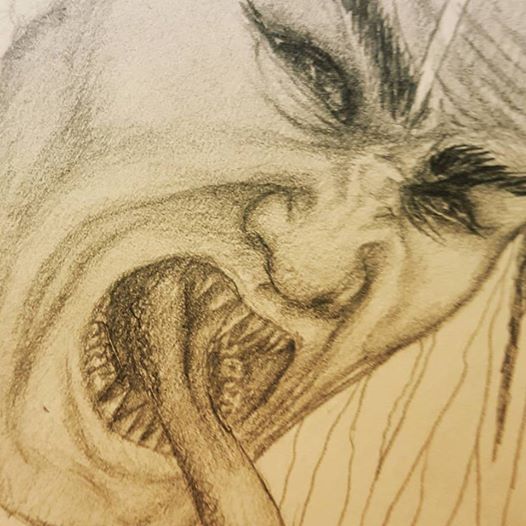
An artwork of an aswang uploaded to Wikipedia by H.M.Bec
Aswangs are often considered as the most ubiquitous of the Filipino monsters. When you look up monsters from the Philippines, this may be the top result. Aswangs are often portrayed as people who transform into ghoulish creatures that feast on human flesh but especially children, babies, and fetuses. There's so many stories and variations of aswangs, however, that some of the monsters in this list are actually sometimes considered as part of the aswang category depending on the source or who you ask.
Aswangs are shapeshifters, often turning into dogs, pigs, and many other creatures, in order to stalk their prey in the middle of the night.
Aswangs are also considered as one of the main stock monsters in FIlipino media so you may see them as the villains of a lot of fantasy series and movies. They're one of the villains that Alexandra Trese faces of regularly on the folklore-inspired supernatural comic book series turned Netflix original animation Trese. They're also the main antagonist in my favorite FIlipino fantaserye series Juan De La Cruz (although I don't particularly like the lead actor anymore lol).
Here's some stuff I've heard about Aswangs from those around me.
Aswangs often won't attack their neighbors and would rather attack neighboring villages/barangays/towns. This is so they avoid detection or suspicion from their community. So, if you suspect your neighbor's an aswang, then you might just be lucky they won't target you.
Aswangs are often said to have come from the province of Capiz. It's an often common joke and stereotype that Capizeños may be aswangs themselves or know people who are aswangs. The people of Capiz are mixed on how they feel about the association with the provincial government seemingly trying to shake off the specific association to their province.
They can go to mass but cannot stay during the consecration of the holy host. Holy water and holy [coconut] oil also boil in their presence.
When you look directly into their eyes, your reflection would be upside-down. They also don't have the dent between the nose and the lips.
They could pass their curse through different ways and may depend on belief or tradition. One belief states that if a person marries an aswang, they also become an aswang.
One of the other beliefs that can turn a person into an aswang is if one makes contact with an aswang's saliva.
According to another belief, a person could also become an aswang if they ingest a black chick alive.
Similarly, an aswang cannot die until they pass their curse to another person (typically a relative). This is done by passing a black stone or chick hidden in their body to the chosen new curse holder.
They hate the typical ghoulish hated items like holy crosses, water, oils, and the classic garlic and salt, but they also hate calamansi (a small Filipino citrus fruit), and my mother had always told me that they hate suha or pomelo (a type of citrus fruit) and the smell of burning rubber.
A typical weapon used to fight against them or ward them off is the buntot pagi or stingray tail that is often sold in occultic shops around the country. You could also buy this from online stores as I've learned (x)(x)(x).
Now here's a story I've heard about them:
A story I had heard was that of the aswang bus. I had heard it repeatedly throughout the years but the basic premise is that there's a bus of a bunch of aswangs from a different province that's traveling to [province you are in] and are hunting down people at night. This is some of the more funny stories about aswangs because I keep imagining an aswang bus driver purposefully running over people and then a bunch of aswang tourists hops off of the bus to drag the body for a snack later.
I honestly might come back to the aswangs topic later since I had just learned some things from a Capizeña who works to help around our house.
The Manananggal
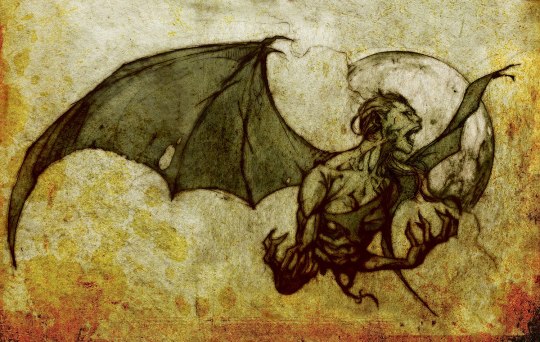
An artwork of an aswang uploaded to Wikipedia by Gian Bernal
The Manananggal is a ghoulish creature and is often times categorized as a kind of aswang. They are typically humanoid creatures that appear as regular people (often women) during the day, but at night their torso severs from their legs and fly away with bat wings. They often feast on fetuses using their long proboscis tongue.
These ghouls share a lot of similarities with the Southeast Asian ghoul called the Penanggal which is a similar creature but instead of their torsos separating, their heads separate from their body alongside their entrails.
Manananggals are also some of the typical stock monsters in Filipino fantasy stories. I can't think of any specific instances of the manananggal being the main character besides the softer depiction of a manananggal girl named Anna in Dayo: Sa Mundo ng Elementalia who acts as a deuteragonist to the human boy Niko. They are also featured in Trese where a tribe of manananggal is shown. They are also the main lead or love interest in some horror movies and even horror romances.
Here's some stuff I've heard about Manananggals
It's name comes from the Tagalog word "tanggal" which means "to remove" or "to separate" and specifically means "the remover" or "the separator". This of course is a reference to the fact that it removes its torso from its legs or separates its body in half.
Unlike the typical aswang which transform back during daylight, the manananggal needs to find their way back to their body or else die by sunlight.
The unattached legs of the manananggal is their weakness. If found by a person, they only need to sprinkle salt or smear crushed garlic on the legs in order to destroy them.
A lot of the typical things that ward off the aswang are also typically effective towards the manananggal.
Similarly to the aswang, manananggals are also said to had come from Capiz.
The list is shorter because honestly, just take what most you've heard about the aswang and apply it here. I don't know specifically if things like the upside-down reflection or the lack of the dent between the nose and lips could apply to manananggals, however, and I don't think I've heard people claiming that about the manananggal.
Now here's a story I've heard about them:
One story I heard that I find quite funny was something my sister heard from one of her high school friends. This friend was struggling to fall asleep at night and was tossing and turning in bed when she heard bat-like fluttering from outside. She went out to inspect the source by looking out the window and was shocked to see a manananggal climbing up a coconut tree and seemingly harvesting the fruit in the middle of the night. She wasn't flying up the tree, she was climbing it.
The next day, an old woman who was selling her goods door-to-door came by their house. She was selling coconuts.
The Tiyanak

A screenshot of a tiyanak from the movie Tiyanak (1988)
The tiyanak is considered as a demonic baby that would transform itself into a regular looking baby, crying in the middle of the night in order to attract their unfortunate target who may feel pity towards the child. The tiyanak may also be classified as an aswang but is typically considered as a separate thing more often than the manananggal from my experience. This creature has noticeably a lot in common with a lot of other Southeast Asian and East Asian myths about demonic babies and toddlers like the tuyol or the tuyul.
Like the previous two, the tiyanak is also part of the typical stock monster antagonists found in Filipino media, but not as much as either the typical aswang or the manananggal. They are often used to add a bit of a scare factor into a story and isn't typically the main antagonist of a story as of recent horror movies (with only a single short B-Movie I could think of called Flight 666 from the Shake, Rattle & Roll horror anthology series. It is not a good movie but it's stupid fun). They are featured, as usual, in Trese as the main supernatural antagonists of a specific story arc. Their depiction from the comic and the Nteflix show has been changed due to the controversial nature of the comic book depiction.
When they appear in a horror series, there's often a sort of reason or lesson as to why one has appeared and typically based on the typical origins of the tiyanak.
The most common belief is that the tiyanak is the ghost or ghoulish corpse that had come from an unbaptized child.
At times, they may be a ghoulish baby that had been created after a woman gets an abortion, other times it is simply just a baby that had died before baptism often as a stillbirth or even as a joint death with their mother.
I had also heard that it may be an abandoned baby that had died to the elements.
It is also believed, the reason that they are cursed to wander the earth after death is because they were not given a name through baptism.
Because of this, when they typically appear in stories, it is often either a story about the bad that could come from abortion or child abandonment depending on the values of the writer.
The tiyanak would also sometimes lead people astray with its cries.
Speaking of its cries, there are some places that believe if the cry sounds loud and near, the tiyanak is actually farther away from you than if you hear the cries to be quieter and farther.
Here's a story I had heard about them:
A common Filipino story of the tiyanak is the parking lot story. Story goes that in certain parking lots of buildings, typically malls, you may hear a baby cry in the middle of the night when you're alone. This is a tiyanak that's trying to lure you in by seemingly tricking you into thinking that it is just an innocent abandoned baby which is sadly common in the country. It is common enough that there are some people who would often want someone to accompany them when they're alone in a parking lot at night.
Further Readings and Sources
As much as I had stated that The Aswangs Project and their handling of discussions about Filipino mythology, specifically Tagalog mythology, is dubious at best, they have a lot of good articles about aswangs that do align with local beliefs so reading through their website for monsters specifically could be a good and free resource. They had also made a documentary that you can watch for free on YouTube that covers a lot of this and more about aswangs.
For written works, I would suggest any of Maximo D. Ramos's works as I've brought up before. There's his published paper The Aswang Syncrasy in Philippine Folklore which is considered as basically the holy grail of Aswang research, which, as I had stated, take up a bulk of the FIlipino monsters. It's hard to find easily accessible PDFs of the paper and I remember that I found a copy of this or a similar work by Ramos but the link has eluded me.
For a less academic and more fun fictionalized source for Filipino monsters I suggest The Lost Journal of Alejandro Pardo: Meet the Dark Creatures from Philippines Mythology by Budjette Tan and David Hontiveros which is available through Amazon here. It follows a fictional researcher and his discoveries of Filipino monsters and other creatures. It's a pretty easy read with a lot of good information about cryptids and monsters from the Philippines, owing to it's style of found media. If you've seen something like Gravity Falls's officially published Journal 3 from the show's universe, it has a similar vibe to that.
That's all I have for now, but I am looking more into this topic! My PC has issues right now so I might answer questions more slowly than my already slow answering speed. I hope this post helped you learn a little more about Filipino mythology and cryptids.
#mayaposts#mayaqna#mayapino#filipino mythology#kapampangan mythology#tagalog mythology#filipino folklore#filipino monsters#bathala#apolaki#mayari#aswang#manananggal#tiyanak#long post#very long post#philippines#filipino
53 notes
·
View notes
Text

Knight of Earth. Art by No Data, from the Of Folk & Fable Tarot.
My representation of the fetus-hunting Aswang, Knight of Earth in this deck.
22 notes
·
View notes